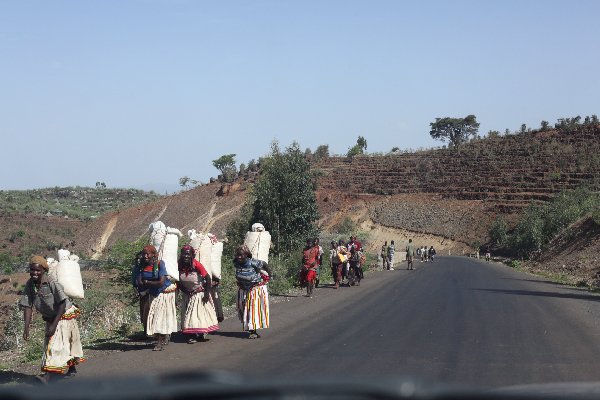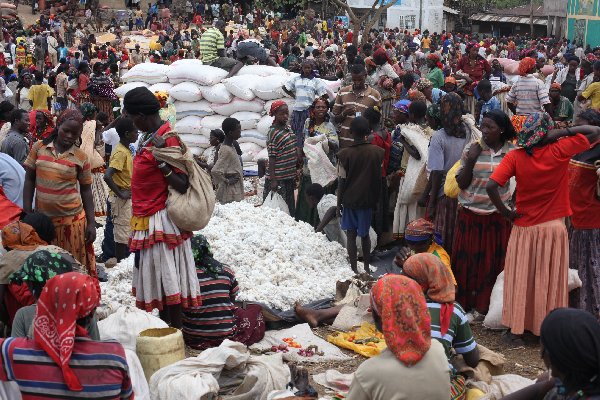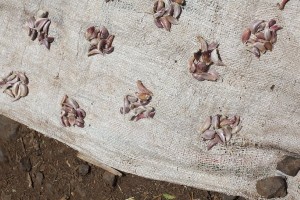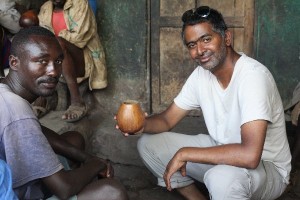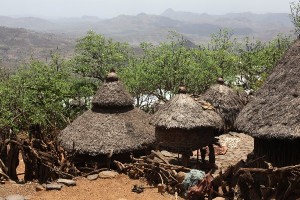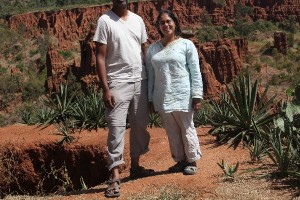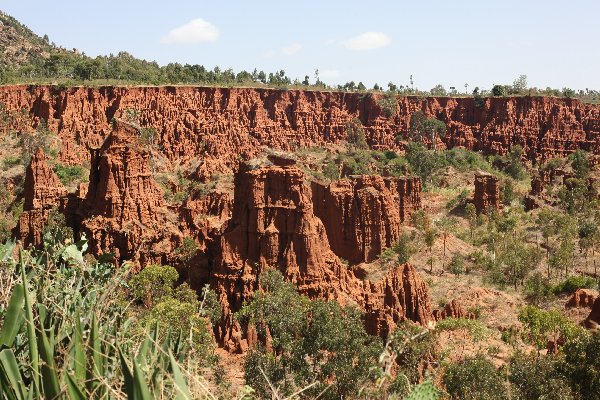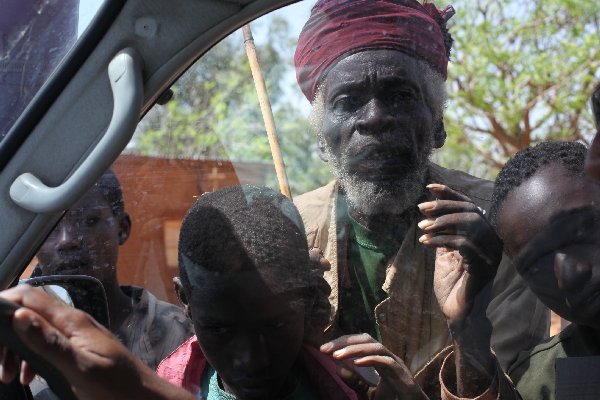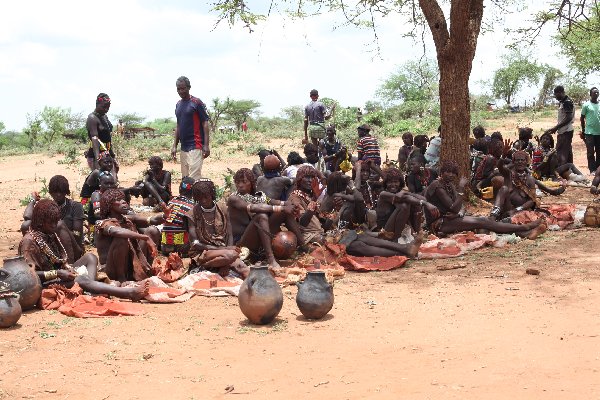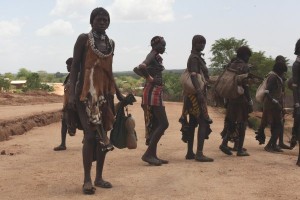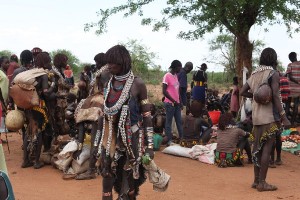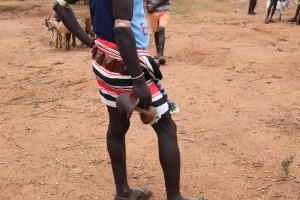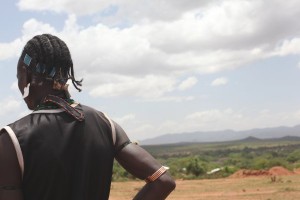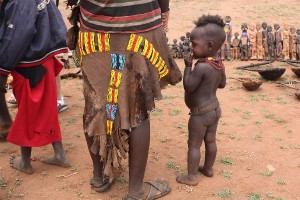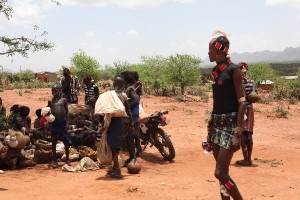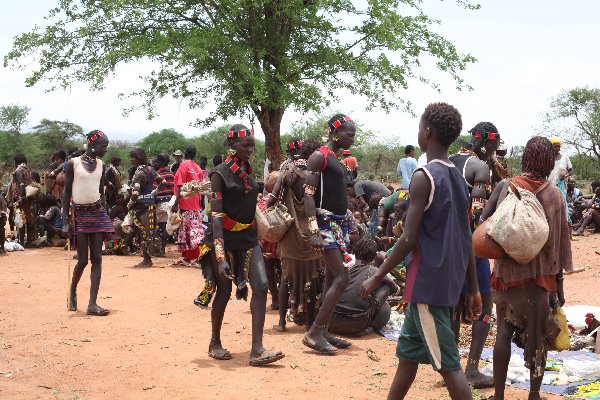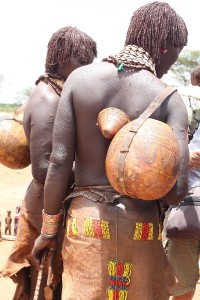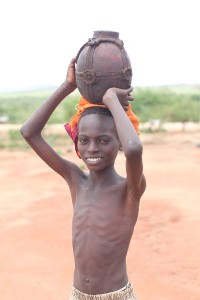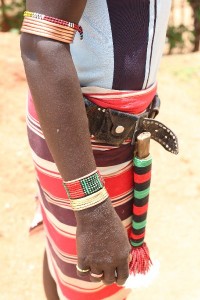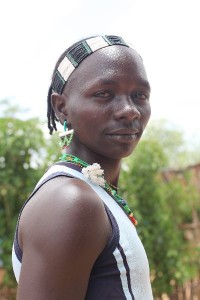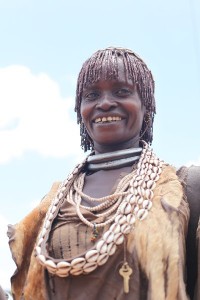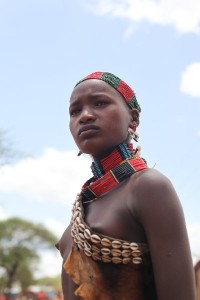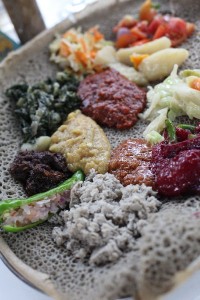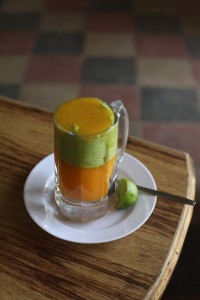The South Omo region in south west Ethiopia is home to numerous tribes, including the well known lip plate wearing Mursi tribe. An interesting area to visit, but we had also heard that the hassle factor was high. One of our guide books described it as a ‘once in a lifetime experience’, but in the sense that if you visit the area once, you won’t ever want to go through the hassle again! Coupled with a ‘pay per click’ approach to photographs, we headed south, ready to pack away the camera and spend a couple of days just looking around.
Our first stop was Karat-Konso and its colourful market. At least it was clear what was being sold – lots of grain, fabric and a few vegetables. People had walked miles to get there with either with heavy bags of grain or just to sell a few tomatoes and cloves of garlic that they had grown, all very carefully displayed. Unfortunately, our guide for the day couldn’t persuade Ven to try the local brew and I didn’t manage to find one of the stylish goat skin handbags the women carried around.
He did take us to a couple of nearby villages, largely quiet as most adults were at the market, though this didn’t stop the kids taking an interest in us. He also took us to the village of Gesergio, locally known as ‘New York’ because of the mesmerising pinnacles of sand formations. Our guide took an interesting photo of the two of us!
We then headed to Turmi, not particularly interesting in itself, but an interesting journey to get there, including having to cross a few rivers which had started to fill up as the rains got under way and a scary looking tribal man showing us across one river.
We were lucky to catch market day in nearby Dimeke, home of the Hamer tribe. A surprisingly friendly bunch, not fussed that there were a few tourists wandering around, though at times we weren’t quite sure what they were actually selling! Given there were a lot of goats, we’re assuming they were for sale. And we found out that the casks had local wild honey. Also for sale was the ochre that the women mix with water and a binding resin to create their copper-coloured twisted strands of hair. Just as interesting were the men’s hair styles, with the buns indicating that the person has recently killed an enemy or a dangerous animal. In order to preserve their hair styles, (and to sit on), the men carry tiny wooden stools. Interestingly, that’s all many men seemed to carry, which says a lot about their priorities!
The clothes and jewellery people wore were just as fascinating to look at. I almost felt I should have dressed up a bit so they too could have had something interesting to look at too when seeing us! The men wear earrings to show the number of wives they have and the heavy metal neck pieces women wear indicate the wealth of their husband. The necklaces with a cylinder hanging off them indicate that a woman is the first wife of a particular man. And bracelets indicate the wealth and social standing of an unmarried woman’s family. It was really interesting to see a slice of tribal life, not created or altered in any way for the few tourists that were wandering around. In fact there wasn’t much there we could have bought, especially given I wasn’t quite prepared to make goat curry that evening!
Despite our reservations, we had had a few fascinating days in South Omo, without too much hassle. We decided to to give the Mursi tribe a miss as they are known to take quite an aggressive approach to tourists, and without a local guide it’s very difficult to negotiate entry into the villages. Also, with the rains coming, we were keen to move into Kenya. We had planned to take a route via Lake Turkana in north west Kenya. This would involve being self sufficient for 5 or 6 days as there are no fuel, water or food stops en route, and very little traffic. But with the rains starting, potentially making river crossings very difficult, and no other vehicle to convoy with, we decided to head east to take the notorious Moyale to Marsabit road to Kenya……
Scores on the doors for Ethiopia…
Beer-o-meter: St George 9/10; Dashen 4/10 (bit too wheat-y)
Wine: 2/10 – often corked due to poor storage
Machiato: 10/10 – though far too small so you need at least 2 in the morning to get you going
Fresh mixed fruit juice (layers of mango, avocado, papaya juice): 10/10 – and especially fabulous at Sofa Juice in Gondar!
Injera with ‘fasting food’ – slightly sour savoury pancake made with fermented batter and lots of vegetables, veggie sauces and lentils: 10/10 – yum!
Internet connection: 0/10 – hopeless!
Camping options: 4/10 – often in hotel courtyards, and given the state of some of the rooms, we were so glad to be sleeping in our roof tent!

